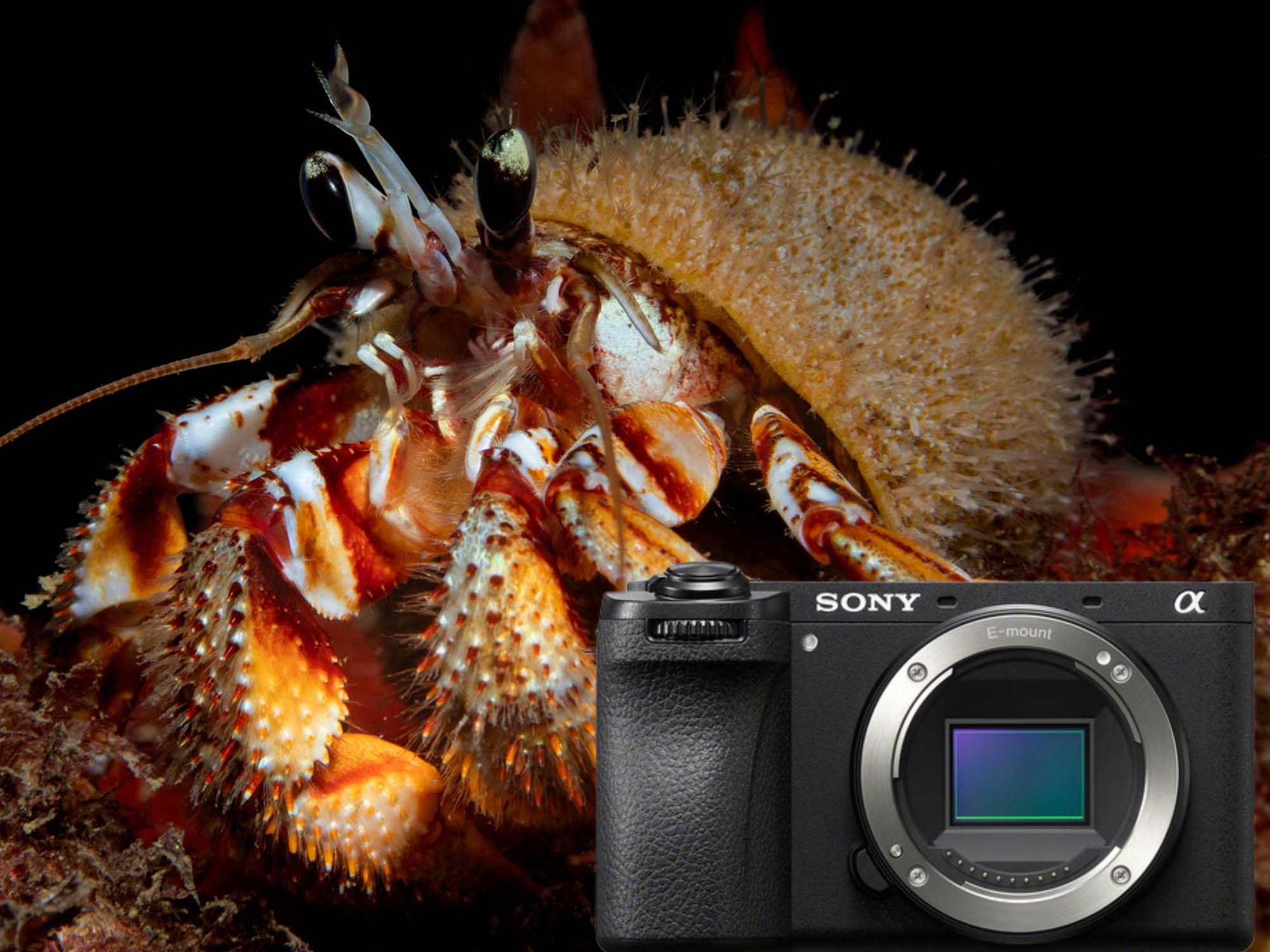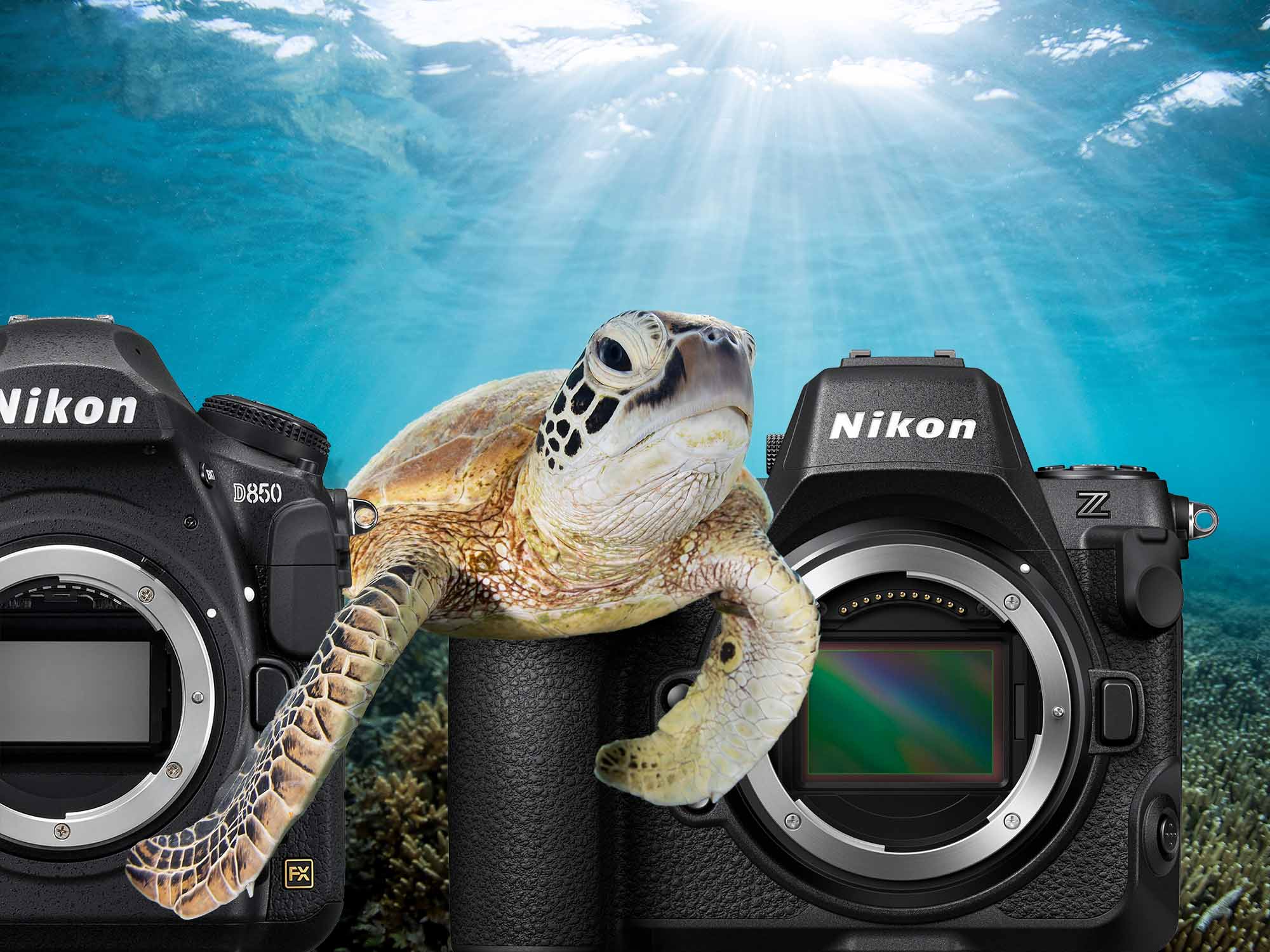By Josh Blank
I'm an underwater photographer, and Ikelite Ambassador, based on the east coast of Australia. The Z8, in my opinion, is really a well-suited camera for anyone that's just looking to get the very best out of their underwater photos or videos. So whether you're a professional or a very keen amateur, this camera will 100% serve you well.
Watch the video below for the full video review, or scroll down to read the transcript.
Why I Switched from the D850 to the Z8
There were a few reasons why I wanted to transition from the D850 to the Z8. It was about time to go mirrorless, but I didn't really feel like Nikon had a camera available that really warranted the expense that comes with an upgrade. When they released the Z8, the camera was boasting improvements with autofocus, low light capabilities and video and it really got my interest and I just decided it was time to make the change.

"The autofocusing on the Z8 is light years ahead of the D850... you can just fire at will and trust that you get to nail the shot." // 1/200 • f/8 • ISO 200 © Josh Blank
Auto Focus
So the auto focusing on the Z8 is light years ahead of the D850, not just in terms of the speed of the auto focusing, but also just the level of customization that you have available. Just using modes like the 3D tracking animal detection. They really made a huge difference underwater to make it very easy to lock focus on your subject, be swimming alongside, and just trust that your camera's going to maintain focus on that animal and you can just fire at will and trust that you get to nail the shot.
Low Light Performance
Low light performance on the Z8 is another improvement over the D850. Where I was lucky to test this camera, it was on the Great Barrier Reef and I had the ability to do some pre-sunrise snorkels to photograph some sea turtles. I found the focus of this camera even in very low light, even in pretty much black water, it was still able to lock onto subjects very easily and it led to some really cool compositions.

The Nikon Z8 blows the D850 out of the water when it comes to lowlight performance. 1/200 • f/20 • ISO 800 © Josh Blank
Dynamic Range
The other thing that's really impressive of the Z8 is its dynamic range. As someone who photographs a lot of some sun burst images in early morning or late afternoon, this is a big advantage for me. It was able to pick up like the brightest and brights of the sunrise, as well as deep shadows down below to create some pretty cool images.
Adapting F-Mount Lenses (FTZ Adapter)
So I had a couple of concerns before transitioning to the mirrorless from the DSLR. The two main ones that I had was having to use the FTZ adapter to use one of my favorite lenses, the 8-15mm fisheye lens. I was very happy to see on using the camera that this adapter does not impact the auto focusing speeds or the image quality of the lens at all. It was a concern that I had, but it absolutely was not warranted.
Battery Life
The other concern that I had was the battery life of the Z8. So, mirrorless systems are known to have less battery life than DSLRs. And I saw online that it was listed at something like 350 shots per charge which for me that would be an issue.
Testing it in real life, however, I actually found that I was shooting for 3 to 4 hours at a time and I was shooting anywhere from 400 to 500 images per charge, including a few videos. And I never actually saw the cameras going below 48% battery life. So again, this was an original concern that I had, but it really wasn't warranted.

Nikon Z8 • NIKKOR 14-30mm f/4 S Lens • 1/200 • f/9 • ISO 250 © Josh Blank
Favorite Lenses
So my favorite lens is to use on the Z8, 100% would be the 8-15mm fisheye lens with the FTZ adapter.
The other lens and I actually had a chance to shoot was the 14-30mm native Z lens. This lens is a rectilinear lens and it has a really useful zoom. Between 14-30 is a great focal length to work with. It focuses very closely. I was focusing on subjects pretty much right on the dome. The image quality is exceptional and sharpness was really impressive as well.

The photo/video dial on the Nikon Z8 housing makes switching between still photography and videography quick and easy when you're underwater. Plus, the Z8 saves the settings between photo and video, making the transition seamless.
Switching Between Photo & Video
So I've been a user of Ikelite housings for many years now and I can honestly say this is my favorite one yet again. There's two reasons for that. The first reason is how easy it is to switch between photo and video mode. So to do this, it is just a really easy dial on the back of the housing and you just turn it to the right or to the left to switch between the two modes, which I found compared to some of the other housings, this one is is really, really easy to use.
Also, the Z8 will save the settings between video and photo mode, so it just makes it really easy when you're down on a dive shooting an animal, and you want to quickly switch to the use of video as opposed to photo. It is totally seamless and really, really quick.

Josh on the USB Charging & Data Transfer Bulkhead: "Personally, I found that setting it to charge was the best way to go. With a big enough memory card, I was able to keep the camera in the housing for up to three days before I had to even consider taking the camera out to do any kind of maintenance or or data transfer."
USB-C Charging & Data Transfer Bulkhead
The other thing is an optional addition that you have, but I highly recommend getting it and it's just a bulkhead that can be installed by yourself to the side of the housing down here.
All this is is a USB-C charging or data transfer port. This was something that it is honestly out of so much time back to holidays. When I'm on dive trips, I used to spend hours taking the camera in and out of the housing. Having a simple bulkhead here, I can attach the USB-C cord through the camera on the inside of the housing and I can charge it up or download files.

Josh Blank is a diver, underwater photographer, and author based out of the Gold Coast on the east coast of Australia. Through a combination of scuba diving and freediving, Josh is passionate about exploring the open ocean and photographing the larger marine species that inhabit the deep blue. With his photography he hopes to inspire, inform, and instill an interest in the underwater world. He recently published an eBook Big Animal Underwater Photography and has a new underwater photography eBook available soon. Read more...
Additional Reading
Nikon Z8 and Ikelite 200DL Underwater Housing [VIDEO]
An Insider's Guide to Diving the Great Barrier Reef, Australia
Sea Turtle Portraits with DS230 Strobes
Up Close and Personal: A Guide to Underwater Animal Portraits











![Nikon Z8 Underwater Review // Josh Blank Ditches the D850 [VIDEO]](http://www.ikelite.com/cdn/shop/articles/Nikon_Z8_Review_copy.jpg?v=1706239387&width=1500)

